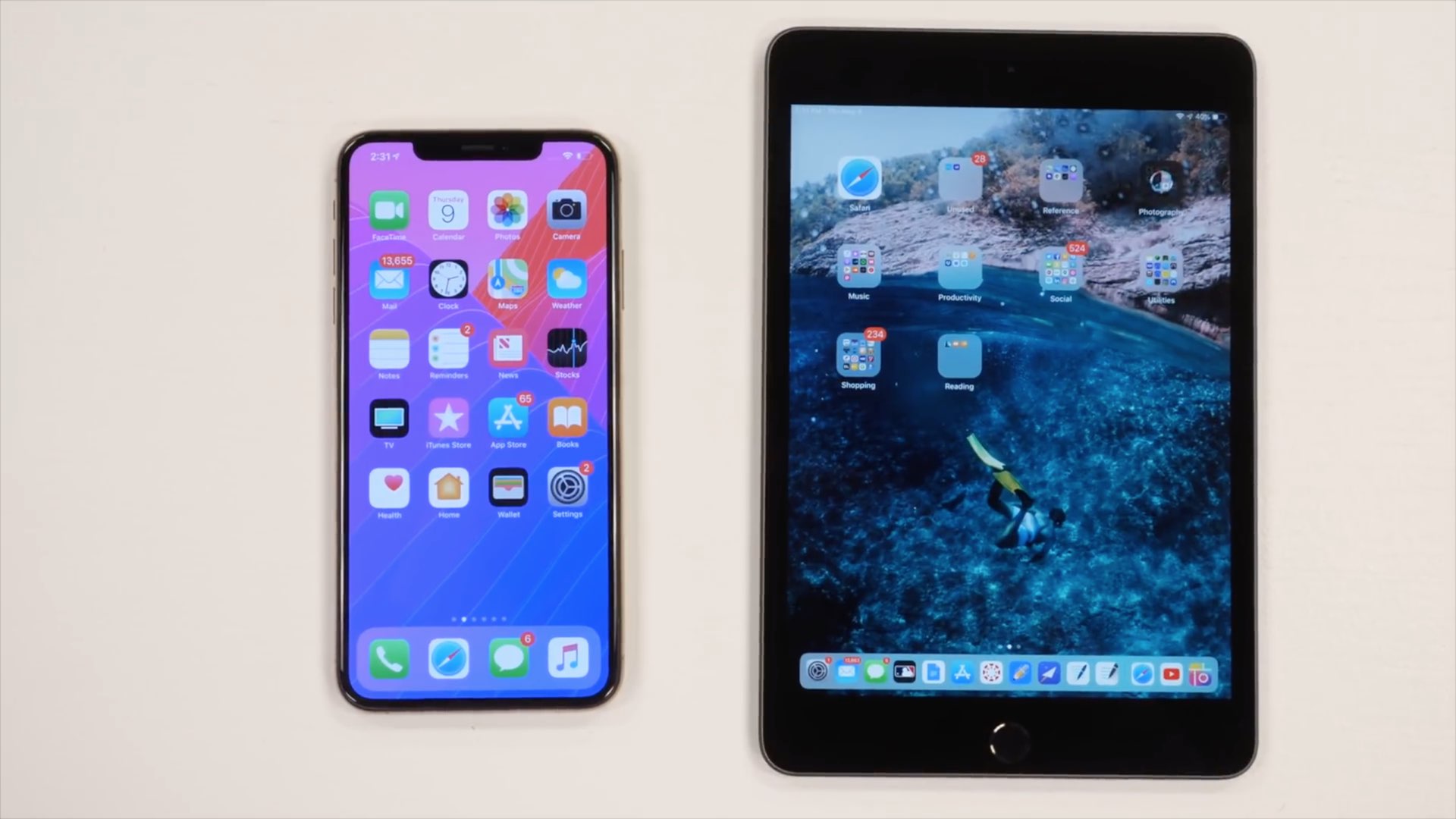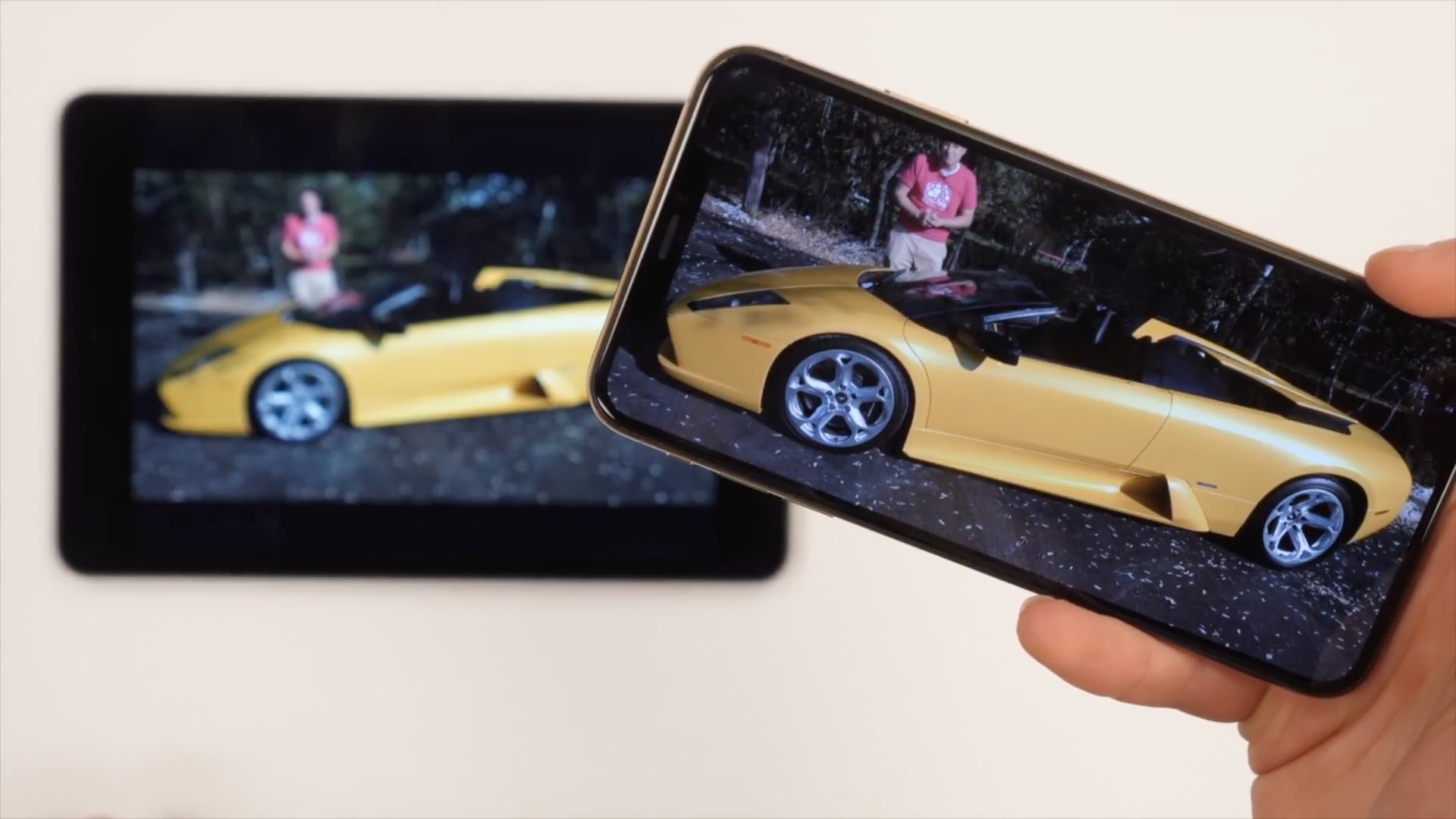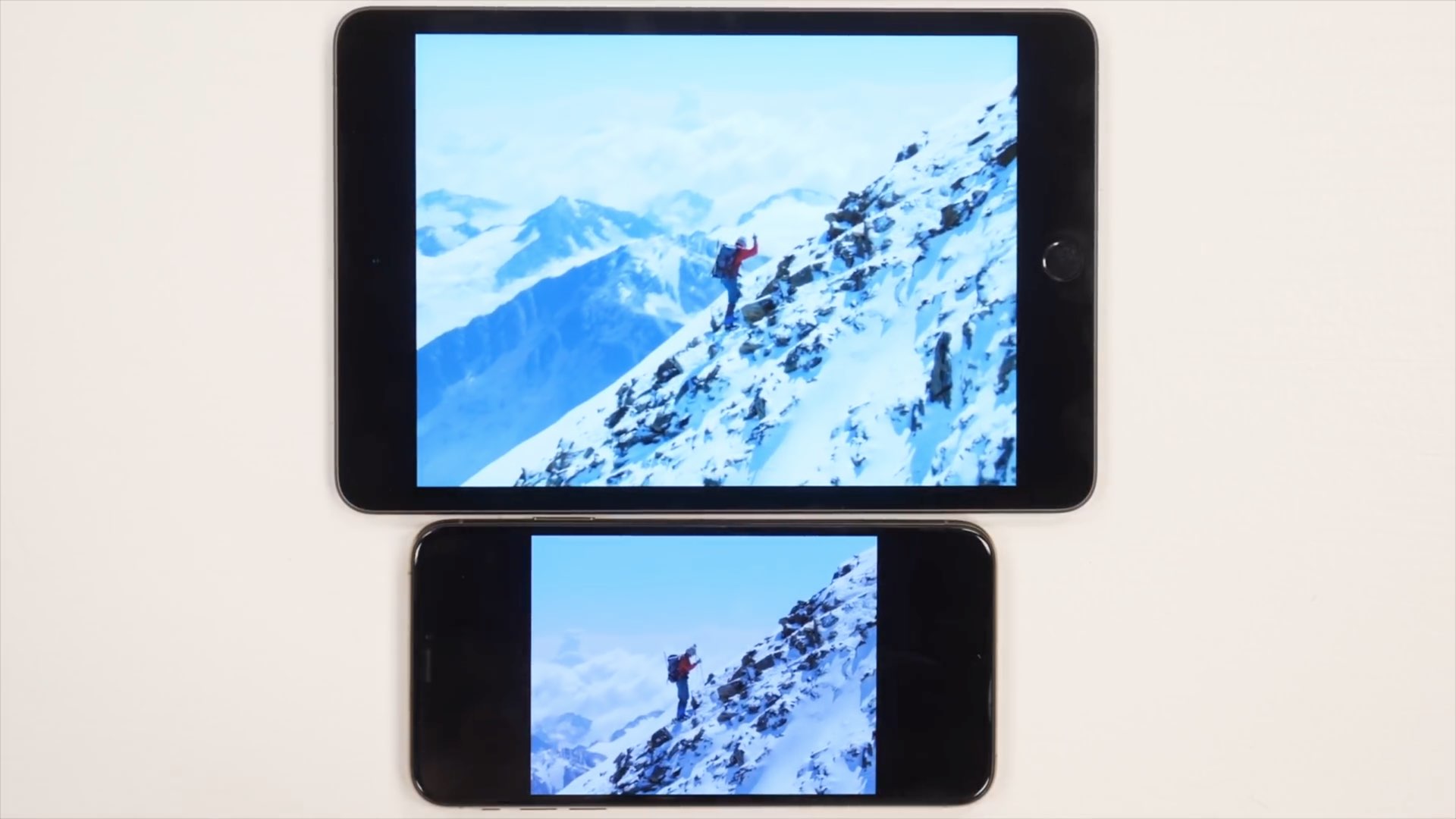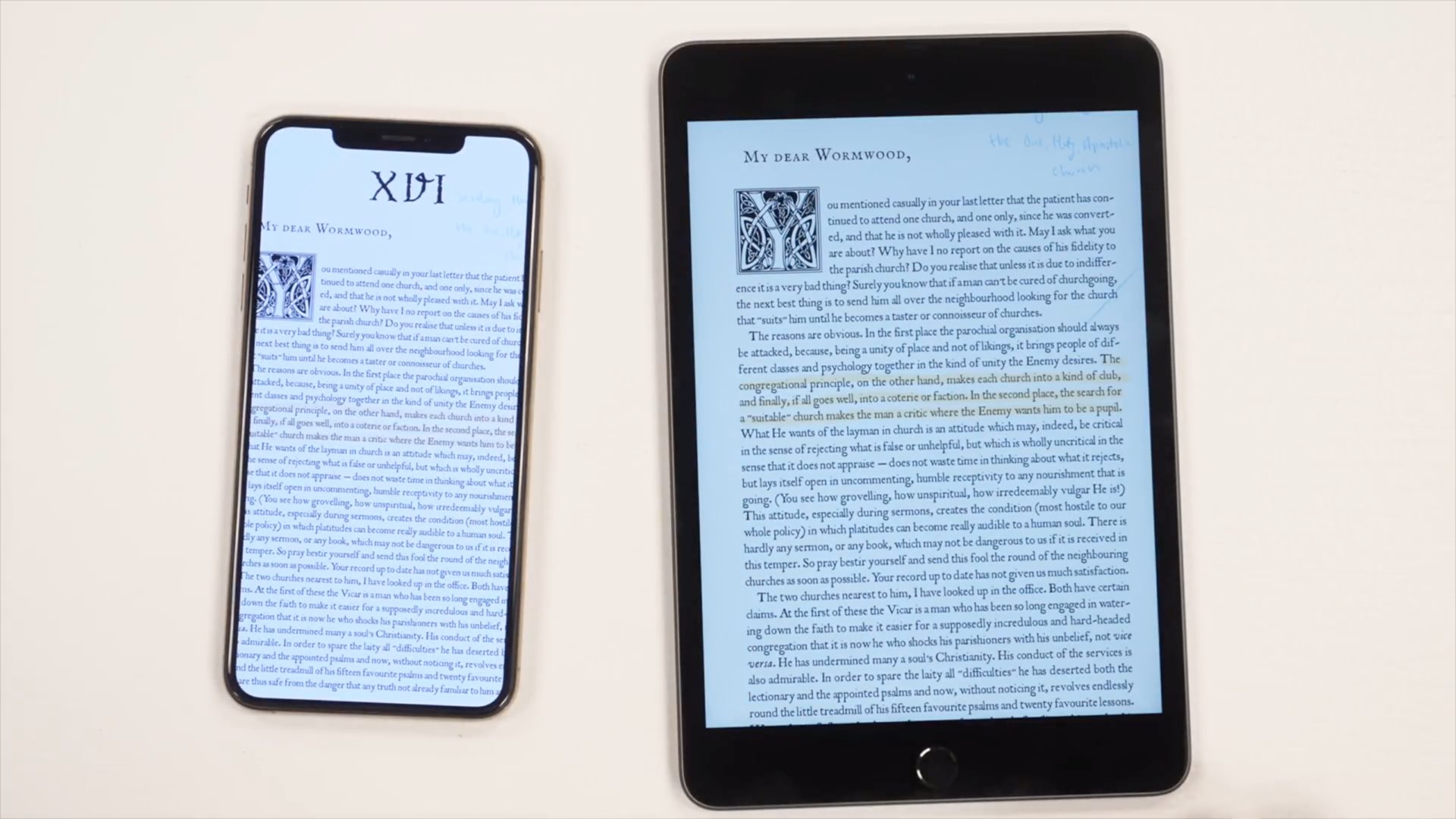
Conventional wisdom is saying that sales of mini tablets have collapsed due to smartphones adopting ever-larger displays. With that in mind, we set out to compared the screen size differences between Apple’s iPad mini and iPhone XS Max.
iPad mini, currently in its fifth iteration, sports a display measuring 7.9 inches diagonally. In the other corner we have the glorious iPhone XS Max, Apple’s largest-screened smartphone with an edge-to-edge OLED panel measuring 6.5 inches diagonally.

iPhone XS Max doesn’t look like it has a 6.5-inch screen, especially seen next to Apple’s Plus-sized phones with their 5.5-inch displays. That’s because, of course, iPhones have since adopted near-fullscreen design that lets the flexible OLED panel extend all the way to the edges.
iPad mini has not yet adopted the skinnier bezels of the latest iPhones or the 201 iPad Pro models so that huge bezel remains present. Due to the form factor differences, iPad mini has a boxier 4:3 display versus a 19:9 screen ratio for the latest Apple smartphone.
Watch Harris’s hands-on video embedded right ahead.
Subscribe to iDownloadBlog on YouTube
Apple is still wasting Home screen space on iPads: you can fit more apps on a Home screen of your iPhone XS Max (24 icons) than on your iPad mini (20 icons). Next, the Dock on all iPad mini models fits up to 14 apps, including the recently-used app section that can be turned off at will
On the other hand, the iPad mini home screen works in portrait and landscape while the Home screen on our iPhone XS Max wouldn’t rotate when we turned the device upside down, which is odd considering that previous Plus-sized iPhones did support the Home screen in landscape.

Some iPhone apps continue to support two-pane layouts in landscape mode, like Settings.
On iPad, more apps support such productivity-boosting layouts, including Mail. And of course, iPhone lacks some of the multitasking features afforded by the bigger iPad screen, like side-by-side multitasking and split-screen tabbed browsing in Safari.
Be sure to watch the video for other usability differences stemming from differently-sized screens, like the typing experience, watching video, using Apple Pencil and more.

Every form factor has its different set of use cases. In that regard, iPad mini and iPhone XS Max target different kinds of users. And what are your thoughts on the advantages and disadvantages of large-screened smartphones versus miniaturized tablets?
Chime in with your thoughts in the comments down below.